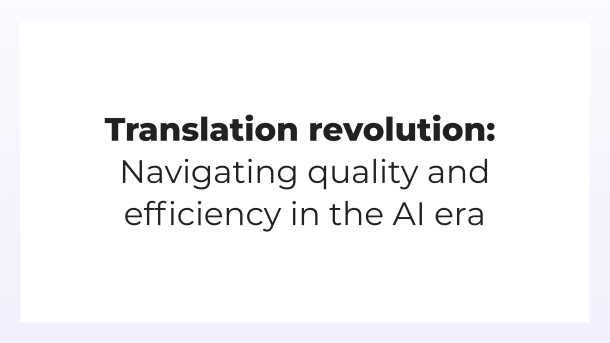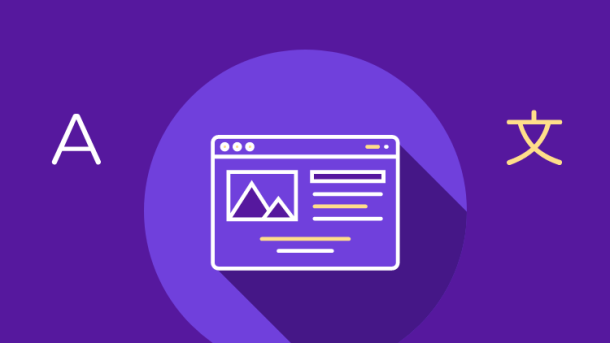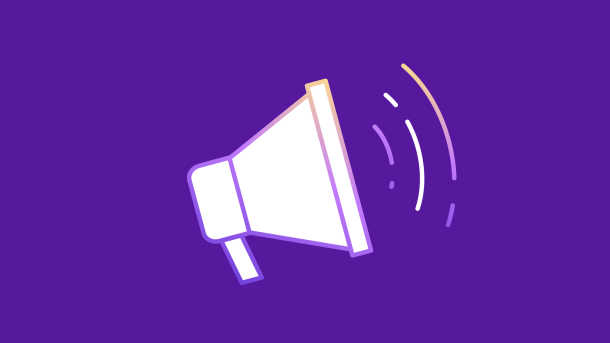How translation as a service is driving modern enterprises
As part of a broader localization strategy, successful translation must be both accurate and scalable.
Tough balance to meet.
Fortunately, there’s a solution that can achieve both objectives:
Translation as a service (TaaS).
In this article, we will explore all things TaaS, from how it's beneficial as part of a localization strategy to how to prepare to engage with a TaaS provider.
Defining TaaS
TaaS provides translation services via an on-demand, cloud-based model.
As a business or individual, you can access translation services as required, typically through a software platform or online portal.
You are not required to invest in or maintain your own translation infrastructure (either using software or an internal resource). Simply send the source text or content that you need translated to the TaaS provider and provide guidelines related to brand, usage, and audience, and the provider will return the content in the target language.
Many TaaS providers use a hybrid model with both a machine translation component and human translation services.
The benefits of TaaS for modern enterprises
TaaS can be a fantastic solution for contemporary organizations looking to expand their offerings into new territories because it provides the perfect blend of accuracy and scalability.
Here are four of the critical benefits that TaaS services can deliver.
Accuracy and reliability
TaaS implies that you’ll be working with a professional translation service provider, whether it is a certified translation expert, a translation agency, or a web app.
This means you can rest assured that their document translation work will be of high quality. Some will even provide quality guarantees.
Access to local language experts
TaaS provides access to true language experts who can not only directly translate from one language to another but can also understand local dialects, commonly used phrases, and idioms.
This is the level of translation you need when you expand into new markets.
For instance, if you’re expanding into Latin America, it may not be enough to simply translate marketing materials—such as case studies, templates, tutorials, and SEO blogs—into standard Spanish.
Dialects differ between Spain, Mexico, and South American countries, so having access to a true local expert will allow you to build native brand experiences that resonate.
Speed and scalability
TaaS is designed to help you translate written materials into different languages quickly and accurately. Many TaaS providers offer an application programming interface (API) that allows you to plug their software solution into your existing tech stack and build custom translation workflows.
Plus, because TaaS companies regularly make use of artificial intelligence (AI) features like machine translation, you’ll also benefit from agility when it comes to editing content.
Humans take time to embed new brand guidelines, for instance, while an AI translator can implement change requests almost instantly.
Industry-specialized expertise
Some TaaS providers, especially those that offer human translation as part of their service, can even provide access to industry-specialized expertise.
If you’re working in a highly technical industry, such as in engineering or biotech fields, having a translator who also understands the technical jargon used in the target language will be key in creating a truly native experience for customers.
The evolution of translation services
Translation as an industry has undergone massive changes in recent years because of two big drivers.
The first is modern companies’ desire to expand into global organizations. The reach of modern go-to-market tactics—social media, email, and digital advertising—is global, but to be effective, businesses need to localize.
The second is technological. Advancements in tech, specifically AI and machine translation, have enabled much more accurate and scalable translation services.
The result of these two commercial developments is the integration of translation services from standalone apps into product offerings.
For example, translation management systems are now a major part of TaaS software rather than standalone products used to manage translation projects.
Discover five ways that real brands are translating content as quickly as they create it.
Preparing your enterprise for TaaS
Have you decided that TaaS is the right solution for your translation needs?
Here’s how to prepare to engage with a TaaS provider:
1. Clearly define your translation needs Before you start looking at different service providers, spend some time defining your exact translation needs.
Start with the basics:
- What languages and dialects do you need to translate into?
- What content, text, and documents do you need translated?
- What level of industry or subject matter expertise does your TaaS provider require?
Then, consider what additional services you might require. For example, do the original documents need proofreading for accuracy before the translation begins? Or will you be providing video or audio content that will first require transcription?
Clearly detailing and documenting what will be involved in your translation will help you identify the right TaaS provider and reduce the likelihood of extra costs down the line.
2. Assign an internal translation leader Next, decide who in your organization will be in charge of the translation process and who will be the point of contact for localization services.
You’ll likely have many stakeholders here. The C-suite should be behind the project from a strategic standpoint, but marketing will be responsible for project management and execution.
For ease of communication and to prevent the “too many cooks in the kitchen” problem, assign one stakeholder the role of translation leader.
3. Prep your source material Finally, it’s time to prep your source material.
Download and organize the documents you wish to have translated. Make sure they’re accessible in a file format that is supported by your SaaS provider.
For example, if you’re going to translate website content, you may need to copy this text into a .DOCX file format.
Now, you’re ready to find the perfect TaaS provider for your translation project.
Top tips for choosing a TaaS provider
Before you jump into researching different TaaS providers, take note of these expert tips for narrowing down your options and creating a shortlist of suppliers.
Look for local expertise
The more local, the better.
Think about where you live and what distinct phrases, idioms, and slang words people in your region use. You might speak English, but if you’re living in Manchester, you’ll have a much different local dialect than someone who lives in Chicago.
When assessing TaaS providers, ask about the level of local expertise in the region you’re targeting.
Ask about quality assurance measures
Speed and scale are easy promises to make since most machine translation solutions can work incredibly quickly.
Quality, however, is something that the translator should control and monitor through various quality assurance and quality control procedures.
When speaking with a potential TaaS provider, ask about the measures and protocols they have in place to ensure that the translated content they provide is accurate.
Check out some reviews
One way you can learn about the level of service and quality a company provides is by digging into existing customer reviews.
First, take a look at a supplier’s customer list. For instance, Smartling’s customers include Shopify, Vimeo, Canva, Pinterest, and Lyft.
When a supplier has a list of large, successful international companies like these, it's a good sign that their translation services have effectively propelled global growth.
After this, check out customer reviews on trusted sites like G2 to dig into real-life, qualitative feedback.
Dig into data security protocols
When you partner with a TaaS provider, you’re trusting them with your company’s most precious resource: its data.
Whether you’re handing over blog posts, email sequences, or internal documentation, you’ll want to feel confident that when you upload a document to the provider’s software platform, it is secure and protected against data leaks.
For example, at Smartling, we’re proud to have continuously maintained compliance with PCI, SOC 2, HIPAA, and GDPR standards to ensure that our customers’ personal information is protected against data threats.
Discover the power of LanguageAI™
The evolution of TaaS has empowered businesses to execute localization strategies at scale.
But equally as important as scalability is accuracy, something that Smartling’s translation services hold in high esteem. Our translation management platform combines human linguists with neural machine translation and automation to translate content quickly and as faithfully to the native tongue as possible.
Book a meeting now to learn more about our professional language services.






